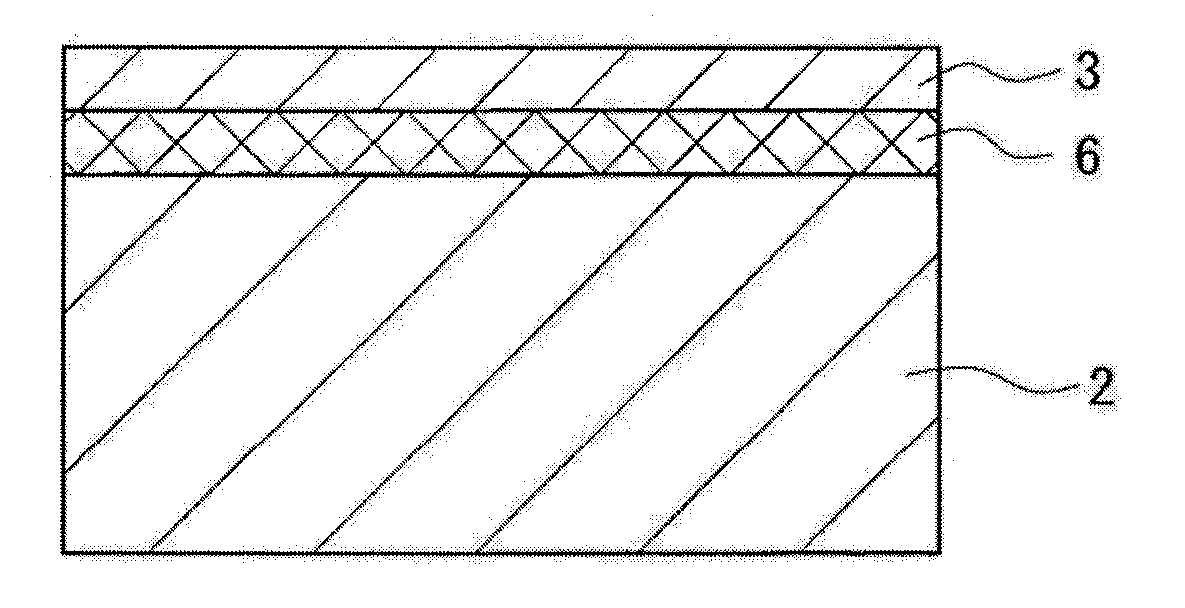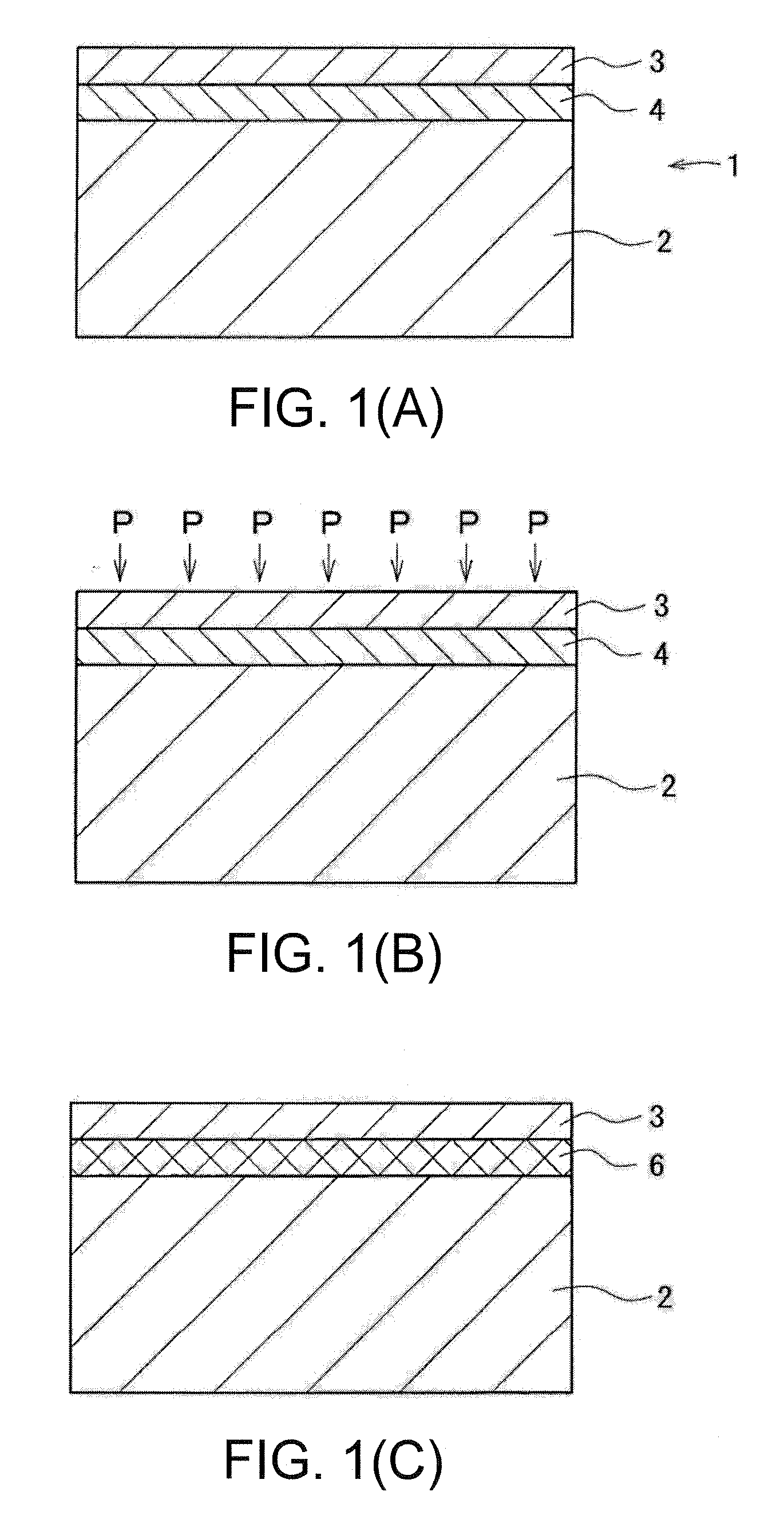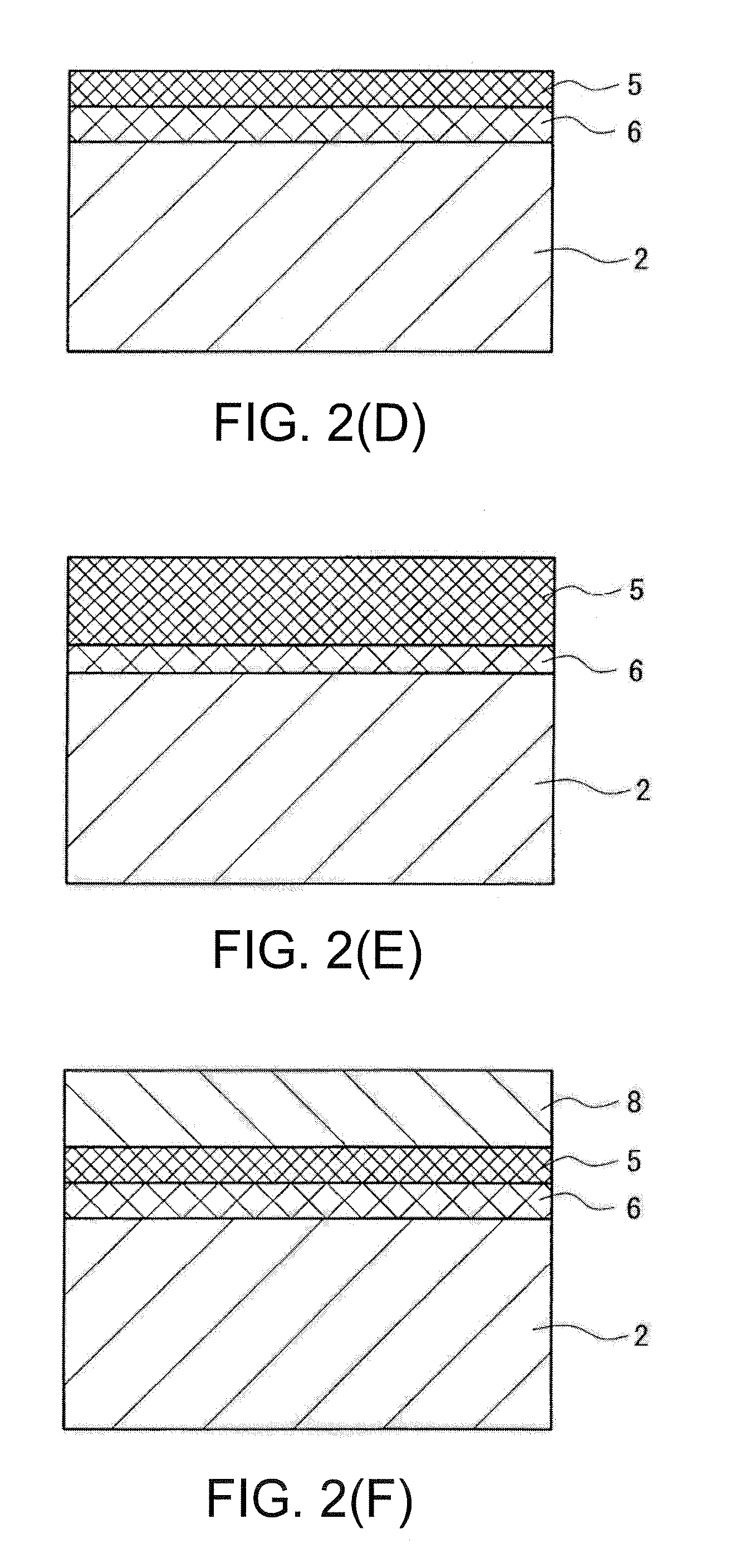METHOD FOR PRODUCING SINGLE CRYSTAL SiC SUBSTRATE AND SINGLE CRYSTAL SiC SUBSTRATE PRODUCED BY THE SAME
a technology of single crystal sic substrate, which is applied in the direction of crystal growth process, polycrystalline material growth, chemistry apparatus and processes, etc., can solve the problems of high price of sic single crystal itself, small area, and high cost of obtainable sic single crystal, and suppress the warp of the entire substrate. , the crystallinity of the sic layer is formed, and the softening point is lower
- Summary
- Abstract
- Description
- Claims
- Application Information
AI Technical Summary
Benefits of technology
Problems solved by technology
Method used
Image
Examples
first embodiment
[0030]FIGS. 1(A) to 1(C) and FIGS. 2(D) to 2(F) are views showing a method for producing a single crystal SiC substrate according to a first embodiment of the invention.
[0031]The method for producing the single crystal SiC substrate performs Steps (1) and (2) below.
[0032](1) A P-type ion introduction step in which P-type ions are introduced from a side of a surface Si layer 3 to an SOI (Silicon On Insulator) substrate 1 in which a surface Si layer 3 and an embedded oxide layer 4 having a predetermined thickness are formed on an Si base material layer 2 to convert the embedded oxide layer 4 into a PSG layer 6 as an embedded glass layer and lower a softening point.
[0033](2) A SiC forming step in which the SOI substrate 1 having the PSG layer 6 as the above-mentioned embedded glass layer formed therein is heated in an atmosphere of hydrocarbon-based gas to convert the surface Si layer 3 into SiC, and thereafter, is cooled to form a single crystal SiC layer 5 on a surface thereof.
[0034]...
second embodiment
[0067]FIGS. 4(A) to 4(D) are diagrams showing a method for producing a single crystal SiC substrate according to a second embodiment of the invention.
[0068]The method for producing the single crystal SiC substrate performs Steps (1), (2) and (3) below.
[0069](1) A glass layer forming step of, before joining an Si base material and an Si thin plate constituting a surface Si layer, forming on a surface, to be a joint surface thereof, of at least one of the Si base material and the surface Si layer by a deposition method a glass layer having a softening point lower than at least the SiO2.
[0070](2) A joining step of joining the Si base material and the Si thin plate so as to sandwich the glass layer therebetween to form an embedded type substrate in which the Si base material layer, the surface Si layer and the embedded glass layer are laminated.
[0071](3) An SiC forming step of heating the embedded type substrate in an atmosphere of hydrocarbon-based gas to convert the surface Si layer i...
PUM
| Property | Measurement | Unit |
|---|---|---|
| temperature | aaaaa | aaaaa |
| accelerating energy | aaaaa | aaaaa |
| thickness | aaaaa | aaaaa |
Abstract
Description
Claims
Application Information
 Login to View More
Login to View More - R&D
- Intellectual Property
- Life Sciences
- Materials
- Tech Scout
- Unparalleled Data Quality
- Higher Quality Content
- 60% Fewer Hallucinations
Browse by: Latest US Patents, China's latest patents, Technical Efficacy Thesaurus, Application Domain, Technology Topic, Popular Technical Reports.
© 2025 PatSnap. All rights reserved.Legal|Privacy policy|Modern Slavery Act Transparency Statement|Sitemap|About US| Contact US: help@patsnap.com



